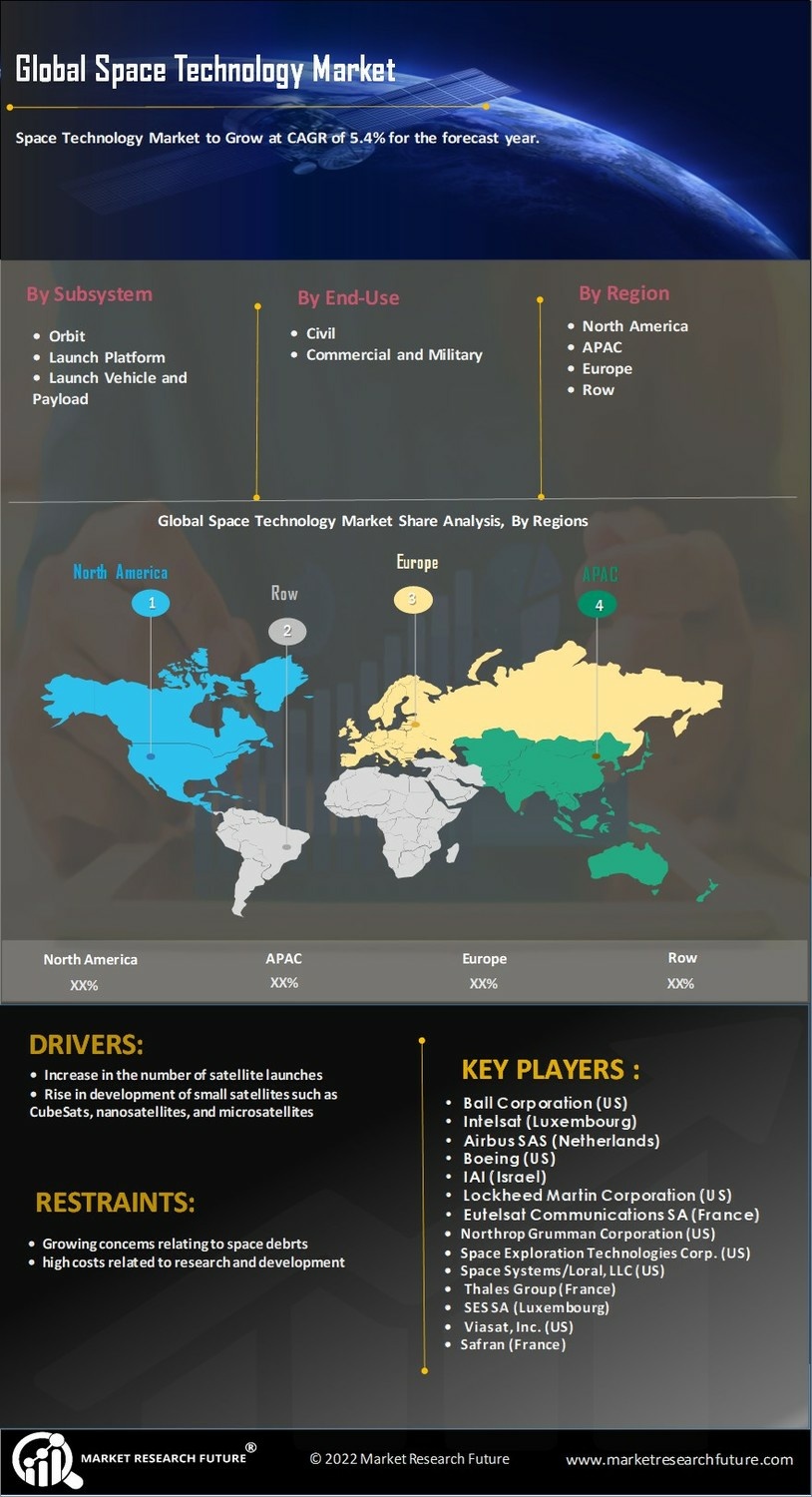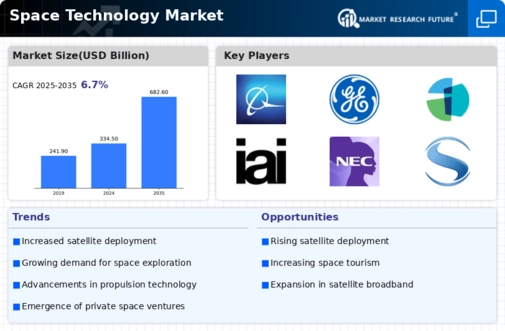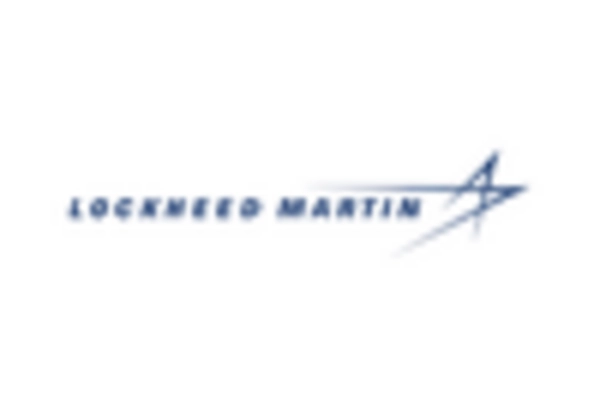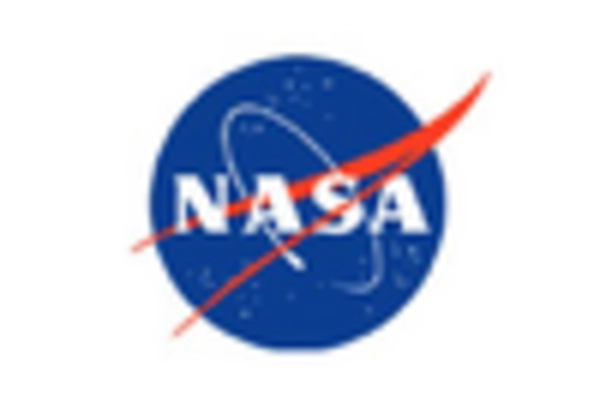Leading market players are investing heavily in research and development in order to expand their product lines, which will help the Space Technology Market, grow even more. Market participants are also undertaking a variety of strategic activities to expand their footprint, with important market developments including new product launches, contractual agreements, mergers and acquisitions, higher investments, and collaboration with other organizations. To expand and survive in a more competitive and rising market climate, Space Technology industry must offer cost-effective items.
The government and private businesses are making significant investments in R&D for technological advancements in the Space Technology industry to benefit clients and increase the market sector. In recent years, the Space Technology industry has advantages such as, the development of innovative materials, pharmaceuticals, and the building of substantial structures in space is facilitated by space-based manufacturing clouds.
Major players in the Space Technology Market, including Airbus SAS, Ball Corporation, Boeing, Eutelsat Communications SA, General Electric, Honeywell International Inc., Intelsat, IAI, Leonardo SpA, Lockheed Martin Corporation, NEC Corporation, Northrop Grumman Corporation, Safran, SES SA, Space Exploration Technologies Corp, Space Systems/Loral, LLC, Teledyne Technologies Incorporated, Thales Group, Transdigm Group, Inc., United Technologies Corporation, Viasat, Inc., and among others are attempting to increase market demand by investing in research and development operations.
Ball Corporation offers beverage, personal care, and home product manufacturers cutting-edge, environmentally friendly aluminium packaging solutions. The company also offers commercial and governmental clients aerospace and other technologies and services. More than 21,500 people are employed by the corporation, which was founded in 1880. The New York Stock Exchange's ticker symbol for Ball Corporation stock is BLL. The charitable arm of our initiatives to create a better world is The Ball Foundation. It provides funding to nonprofit organisations in the American towns and cities where we do business.
In 2022, we spent 48% of our philanthropic funds on recycling initiatives, 25% on expanding education, and 27% on assisting localities in disaster preparedness and rapid response. In March 2023, Ball launched prototype payload from to support on-orbit data processing.
Boeing, a significant international aerospace company, develops, manufactures, and provides maintenance for commercial aeroplanes, military technology, and space systems for clients in more than 150 countries. The company, a major US exporter, leverages the expertise of a vast worldwide supplier network to increase economic opportunity, sustainability, and societal impact. The diverse workforce at Boeing is committed to innovating for the future, leading with sustainability, and developing a culture based on the organization's fundamental values of integrity, quality, and safety. Boeing has corporate operations close to Washington, D.C., and employs more than 140,000 people both domestically and abroad.
There are three business units at Boeing Commercial aircraft, defence, and security technologies.


















Leave a Comment